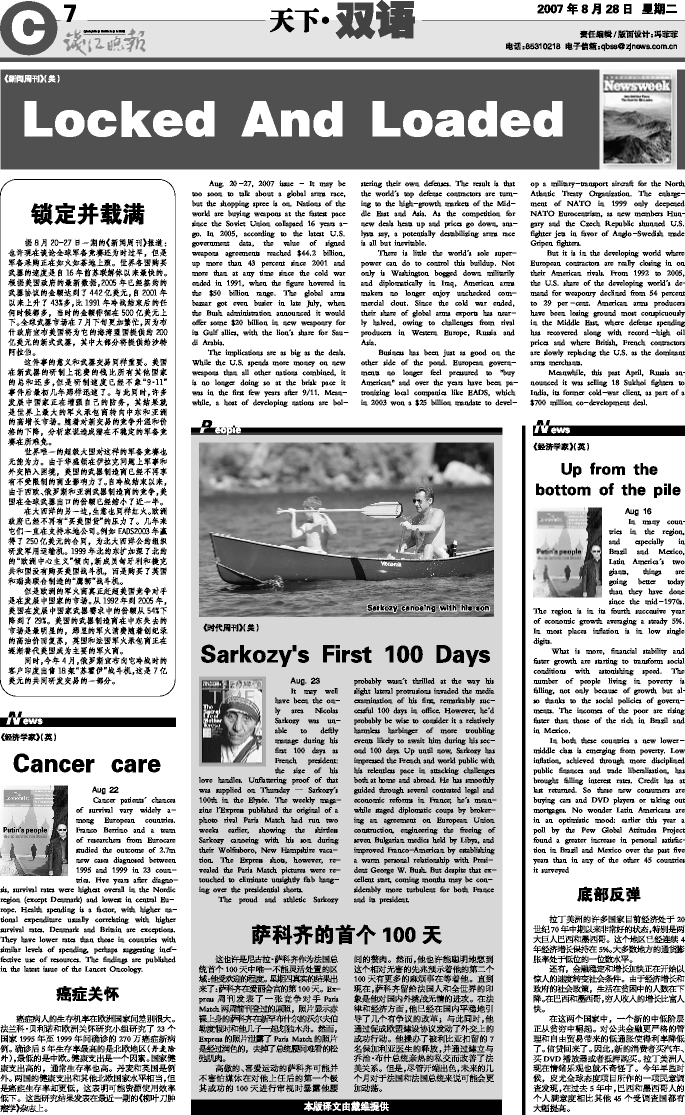Aug. 20-27, 2007 issue - It may be too soon to talk about a global arms race, but the shopping spree is on. Nations of the world are buying weapons at the fastest pace since the Soviet Union collapsed 16 years ago. In 2005, according to the latest U.S. government data, the value of signed weapons agreements reached $44.2 billion, up more than 43 percent since 2001 and more than at any time since the cold war ended in 1991, when the figure hovered in the $50 billion range. The global arms bazaar got even busier in late July, when the Bush administration announced it would offer some $20 billion in new weaponry for its Gulf allies, with the lion's share for Saudi Arabia.
The implications are as big as the deals. While the U.S. spends more money on new weapons than all other nations combined, it is no longer doing so at the brisk pace it was in the first few years after 9/11. Meanwhile, a host of developing nations are bolstering their own defenses. The result is that the world's top defense contractors are turning to the high-growth markets of the Middle East and Asia. As the competition for new deals heats up and prices go down, analysts say, a potentially destabilizing arms race is all but inevitable.
There is little the world's sole superpower can do to control this buildup. Not only is Washington bogged down militarily and diplomatically in Iraq, American arms makers no longer enjoy unchecked commercial clout. Since the cold war ended, their share of global arms exports has nearly halved, owing to challenges from rival producers in Western Europe, Russia and Asia.
Business has been just as good on the other side of the pond. European governments no longer feel pressured to "buy American" and over the years have been patronizing local companies like EADS, which in 2003 won a $25 billion mandate to develop a military-transport aircraft for the North Atlantic Treaty Organization. The enlargement of NATO in 1999 only deepened NATO Eurocentrism, as new members Hungary and the Czech Republic shunned U.S. fighter jets in favor of Anglo-Swedish made Gripen fighters.
But it is in the developing world where European contractors are really closing in on their American rivals. From 1992 to 2005, the U.S. share of the developing world's demand for weaponry declined from 54 percent to 29 per-cent. American arms producers have been losing ground most conspicuously in the Middle East, where defense spending has recovered along with record-high oil prices and where British, French contractors are slowly replacing the U.S. as the dominant arms merchants.
Meanwhile, this past April, Russia announced it was selling 18 Sukhoi fighters to India, its former cold-war client, as part of a $700 million co-development deal.

